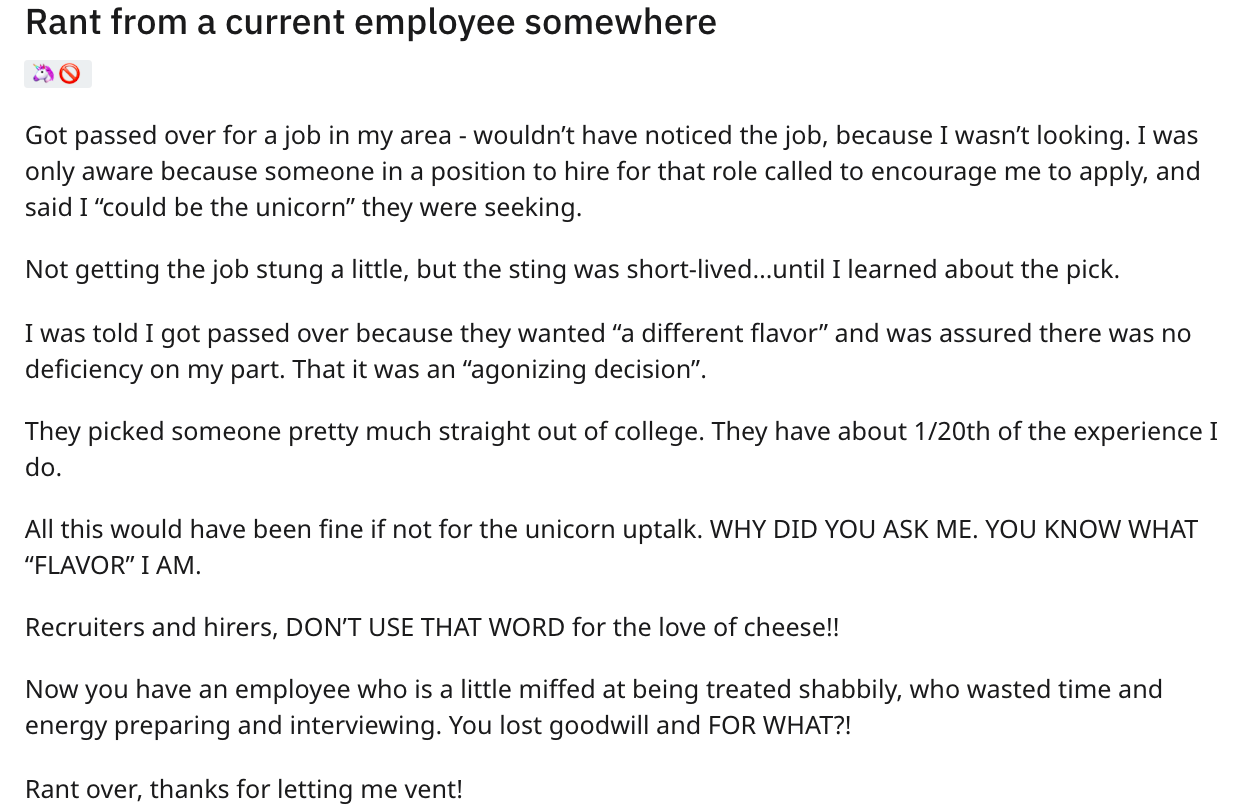Career
5 simple Interview Etiquette Rules [for recruiters]

These seemingly small gestures and tiny inadequacies can make a big impact sometimes, especially if they coincide with a job interview. Learn 5 simple interview etiquette rules.
Interviews have become inevitable parts of hiring process in basically every domain nowadays. When it comes to tech oriented companies and IT experts, this whole hiring process usually consists in two separate types of question sections.
Recruiting and staffing companies or HR departments and in-house HR managers often represent the initial part of this procedure.
There’s more to recruitment than checking out LinkedIn profiles, collecting CV’s and making developers count tennis balls in an imaginary school bus. These interviews should be carefully prepared with the idea to provide and collect all of the relevant information – from and to both ends. Both sides are entitled to be properly introduced to each other and that makes this hiring chapter significant.
There are a few pretty simple rules that can be applied to various situations and sections of daily working life, and everyone seems to be forgetting about those rules every now and then. These seemingly small gestures and tiny inadequacies can make a big impact sometimes, especially if they coincide with a job interview.
1. First impression – Avoid cases of mistaken identities and typos
Before a candidate officially arrives to the interview, some emailing is unavoidable – there must be at least a brief invite and confirmation involved. Someone might be in a hurry or someone might lack the concentration for only a moment, and it’s when Murphy’s Law kicks in and creates cringe worthy texts.
IT recruiters have a lot on their hands and on their minds. It’s easy to make a simple mistake and send out a wrong message.
- One of the most common mistakes is typing in a wrong name. There are numerous reasons for this to happen and it can actually be perfectly understandable in some, if not the majority of cases. But the cold harsh fact is that if a recruiter makes this sort of a mistake, there’s an insanely high percent of chance that a developer will rather change his name than agree to change his job.
And yes, this addressing malfunction is usually presumed as a typical copy-paste syndrome and recruiters can be scolded to infinity and beyond when something like this occurs. But it’s a two way street and this goes out for everyone: Dear Recruiters and other tech and non-tech people, double check your texts before sending them. It’s cool to take a moment and make sure you’ve got everything right.
- This double checking also implies typos and similar errors, disastrous products of autocorrect, grammar-nazi-proofing your emails etc. So sit back and take a quick glance at what you wrote.
2. Punctuality – First impression, part two
Once you’ve said yes to a meeting, make sure to arrive on time. This might easily seem like the most evident fact ever, but it somehow manages to become an obstacle in the most inconvenient moment. Calculate and recalculate the route you’re planning to use. Be careful when scheduling – think of the first step and double check your calendar, reminder, alarm clock, that one colleague that always remembers stuff, notebooks, agendas, or a fortune teller if necessary.
Knowing the value of time should be number one on everyone’s list of priorities. Not being able to achieve a goal or fulfil a task successfully within a previously agreed time frame can be interpreted as disrespect. It’s the same with showing up late at an appointment. And if that appointment happens to be a job interview – you’re a very unlikely candidate to be taken seriously. If you’re the person in charge of conducting the interview, well you’re just about equally doomed. Time quotes are related to way too many clichés, but time does need to be treated as one of the most valuable resources.
3. Dressed to recruit!
Another variable you should count in when having an interview (or a business meeting) is the appearance. Many IT and Recruiting companies, typically small businesses and small and/or remote staffing companies are about the laid back approach. It means flexibility in more than one aspect, and it surely means casual slash non existing dress code. But meeting a new client, business partner or employee could entail a new set of the rules.
Large IT companies or small IT companies with the tendency to appreciate suits and ties can hire (for example) a remote HR team. They might need sourcing or end-to-end recruiting services. And the team they’re looking to hire must fulfill the certain requirements regarding HR solutions and recruiting skills, but to them it’s also important to maintain employer branding image.
Make no mistake – dressing for the occasion isn’t about the style itself, it’s about showing interest in a company’s culture. It’s being respectful. It’s also a part of necessary background checking.
So if you come from the track suit and yoga pants friendly working environment or from a remote job, take a good look at what’s appreciated in the company you’re paying a visit.
4. Did someone say background checking?
Each HR manager and IT recruiter should know the importance of assembling facts and information while doing their sourcing sorcery thing. They do need to keep track of literally everything regarding a hiring process – collecting and saving info, keeping colleagues in loop and sharing data.
And every tech recruitment agency must have its own system to preserve information and contacts. Recruiters are ought to use all sorts of tools in order to easily find details they need at any given time – documents, spreadsheets, etc. But it’s equally or more important to gather facts in the first place.
An HR must be thoroughly prepared for the interview. It does mean to have a good look at the CV, business and social media network profiles of a candidate etc. But it also requires some extra time to look up the company he’s currently working in or the last job he has had.
It would raise the right questions and hence lead to relevant answers – the recruiter will actually get to know about the candidate and his goals and values. This kind of approach might give the interview a much needed friendly factor and it would shift its concept from questionnaire-like form to an actual conversation.
Which leads us to the next subject.
5. How many golf balls can fit into an angry developer?
As we just established – inducing the right questions is the proper way to conduct an interview. What really matters is…
Well, it’s personal. It’s individual. It’s changeable. It depends on numerous factors.
And you, fellow recruiters, should hear all about it. Rather than asking textbook questions let the candidates speak their mind. Be genuine and kind of spontaneous.

OK, we need to face one fact – some of those “typical HR questions” are actually a must. No one is particularly impressed by them, but some bits of interviews have their purpose and should be accepted as such – less than fun but more than obligatory.
Asking these questions about someone’s actual aspirations and intentions will give a recruiter the insight in what might interest a candidate. And his preferences are mainly not about the new coffee machine or a possibility of beer pong tournament.
Tell them about some truly good, and we’re speaking LONG TERM good stuff your client or employee has to offer.
Members of remote HR solutions teams or IT recruiting agencies need to go an extra mile in order to become deeply familiar with all of their clients’ requirements and with their goals and plans. And their clients must be aware of this and keep them posted and well informed.
These are some fundamental methods and tricks a successful recruitment strategy should consist of. We’d be happy to hear and/or say more about this subject. Let us know what you find significant and let’s do our best to improve hiring process and candidate experience.